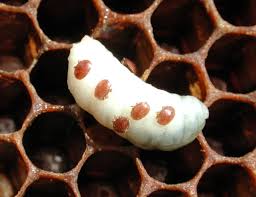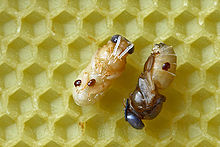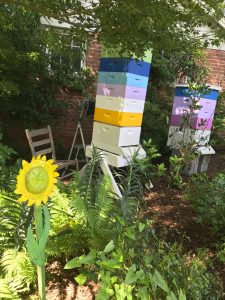Nice article for you to read: N.C. State study: Bees can’t stand the urban heat check it out.
g
N.C. State study: Bees can’t stand the urban heat
BY JEREMY FRIELING jfrieling@newsobserver.com
true
RALEIGH
On a hot summer day, urban areas of the Triangle can be up to five degrees warmer than surrounding rural locations, and the temperature gap grows after the sun sets, as acres of pavement, concrete and steel emit heat absorbed during the day.
The phenomenon is known as the “urban heat island” effect, and a recent N.C. State University study shows that many of North Carolina’s native bee species keep away from hot, urban areas. The study also offers a glimpse at how bees might be affected by rising temperatures due to climate change.
“We’re interested in how urban warming affects the ecology of insects and what implications that might have for understanding how global warming might impact insects outside of the city, “ said Elsa Youngsteadt, an entomology research associate at NCSU and co-lead author of the study.
North Carolina is home to 500 species of bees, both native and naturalized, which are directly linked to the success of its annual $84 billion agriculture industry.
Domesticated European honeybees are often credited with pollinating crops. But in places like North Carolina, where fields tend to be smaller, native bees have been shown to do much of the pollination work. Bumblebees, mining bees, and mason or orchard bees are crucial for spring-flowering crops such as apples and blueberries, according to crop researchers.
Now scientists want to know how global warming will affect bees and whether it might result in fewer bees buzzing around where they are needed.
Two years ago, April Hamblin, an entomology graduate student at NCSU who carried out the field work and co-wrote the study, began looking at how some of North Carolina’s common native bee species tolerate increasing heat by placing individual bees in small test tubes. The tubes were then warmed slowly until the bee became incapacitated due to heat exhaustion.
She found that carpenter bees were the most heat tolerant, withstanding temperatures up to 124 degrees. Sweat bees and bumblebees, meanwhile, were the least heat tolerant, each becoming incapacitated at just below 113 degrees.
WHAT ABOUT OUTSIDE?
To see whether the lab test is an accurate predictor how bees respond to heat in the real world, Hamblin used urban heat islands to mimic climate change, following bee populations at 18 places around Wake County over two years. The abundance of each species was compared between warmer and cooler sites. It turned out that the bees with a low heat tolerance in the lab, including bumblebees and sweat bees, were less abundant in hotter areas.
“As a group, the bumblebees were consistently lower than average in their heat tolerance, and their populations tended to decline,” said Youngsteadt, adding, “Almost all of the species we looked at declined with warming.”
Sheila Colla, assistant professor of environmental studies at York University in Toronto, said recent studies she was involved with have reached similar conclusions: Bumblebees are especially susceptible to climate change.
Colla noted that The International Union for Conservation of Nature recently assessed North American bumblebees and found that one-quarter to one-third of the species are at risk of extinction due to climate change and other factors such as habitat loss and disease.



 Good morning fellow Bee Sustainers,
Good morning fellow Bee Sustainers,